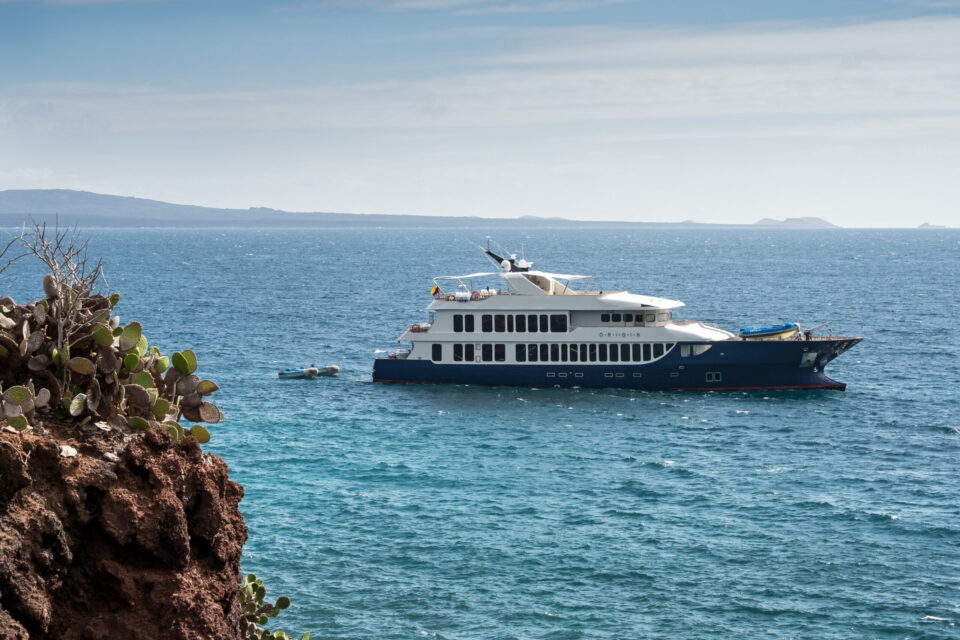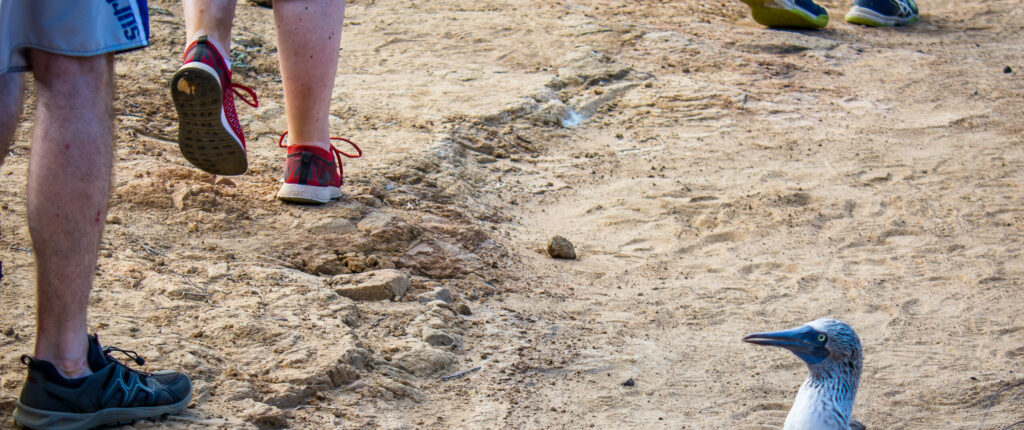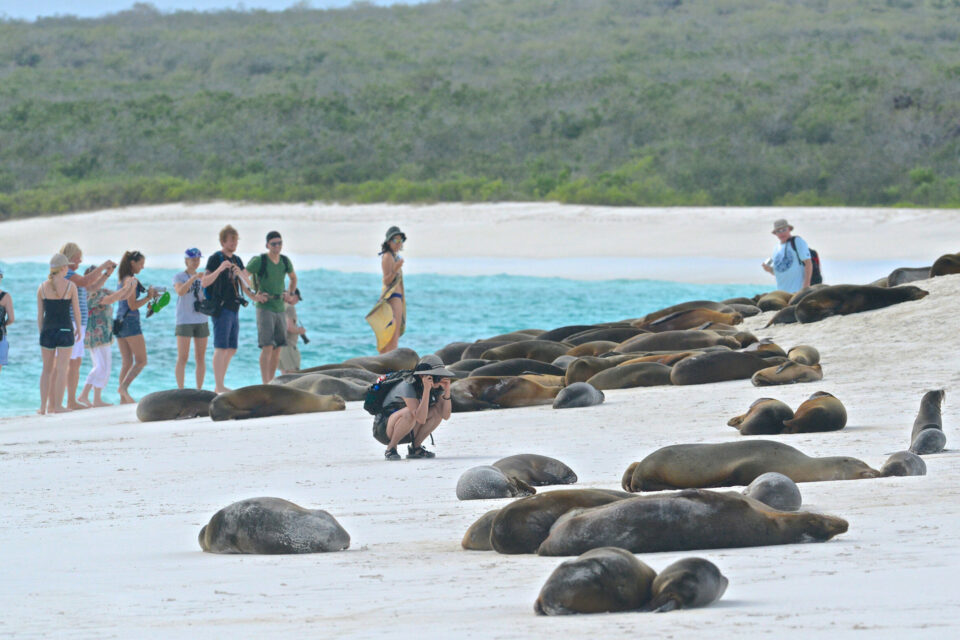

Tourism in Galapagos
Tourism offers a window to the wonders of Galapagos, and it is currently an important source of revenue for the local community. With the increasing development of tourism throughout the past 50 years, the Islands have become one of the most popular wildlife tourism destinations in the world, considerably changing the social, political and environmental landscapes of Galapagos.
Wildlife tourism has the ability to draw attention to serious conservation issues, to place a financial value on conserving wildlife and to keep a watchful eye on remote sites, but it is essential to balance these benefits with sustainability values. Around 270,000 people visit the Galapagos Islands each year and this number is steadily increasing. Our vision is to see the unique nature and beauty of the Galapagos Archipelago conserved and protected in perpetuity – and you can help.
Arriving in Galapagos
Flights arrive from the coastal city of Guayaquil or the capital city Quito (via Guayaquil) in mainland Ecuador. There are two main airports in Galapagos, one on Baltra island (just north of Santa Cruz) and the other on San Cristobal. Upon arrival, you must pay an entrance fee to the Galapagos National Park (currently $100 for adults and $50 for children) which is used to fund management and conservation in the Islands. To ensure that the risk of introducing foreign animals, plants, seeds and bacteria is minimal, make sure that you follow all quarantine procedures.
To find out more about arriving in Galapagos, visit the IGTOA website.
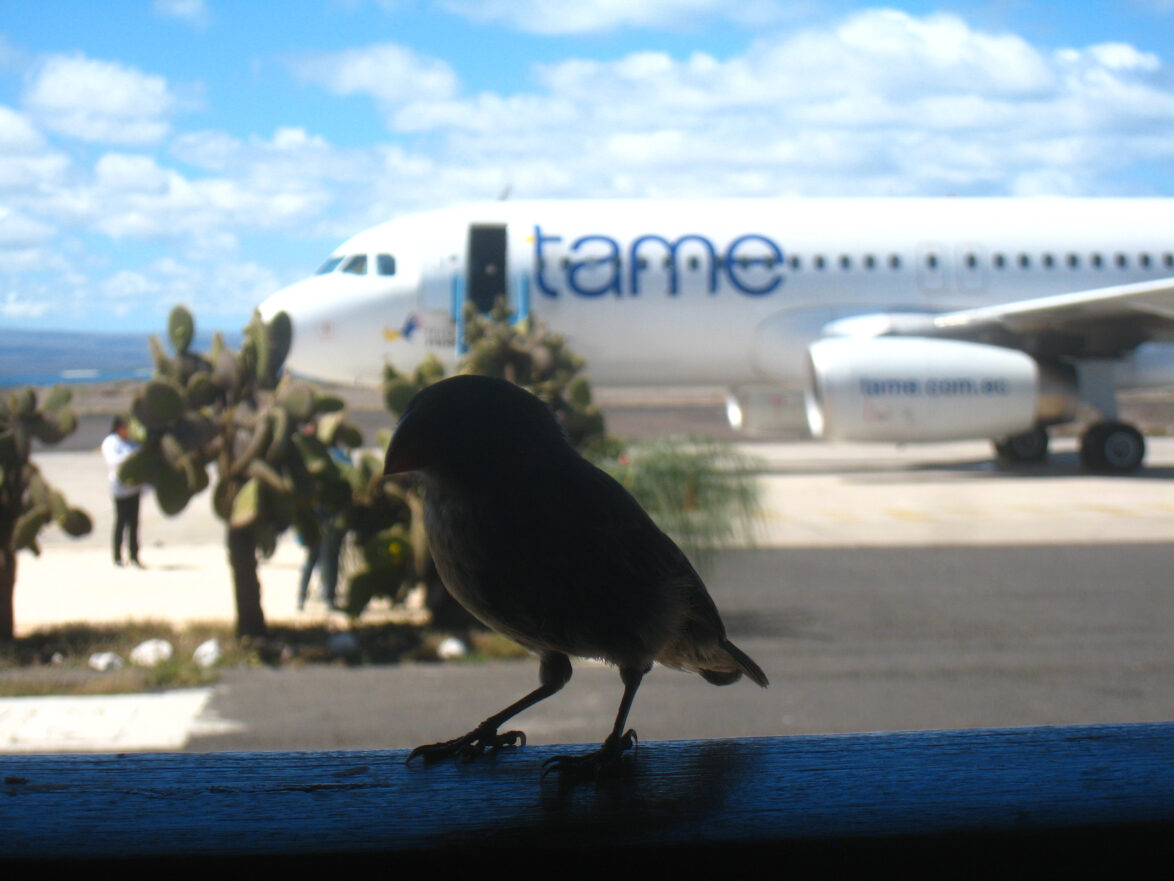
When to visit
There is no real ‘off’ season in Galapagos, but be aware that during El Niño years, seasons can vary considerably, and the animals’ breeding seasons and behaviours are often greatly affected.
December to May: This is the warm season with higher temperatures and occasional heavy rains. The hottest month is March with an average maximum temperature of 30⁰C. The sea is warmer and calmer, with large schools of hammerheads and the chance to see giant manta rays off Isabela, and the Islands turn green as the arid lowlands bloom. At this time of year many of the land birds and reptiles begin to breed.
June to November: The weather is relatively cool and dry, with sunny or overcast skies and occasional drizzle or mist (garúa) in the highlands. Daily temperatures range from a minimum of 19⁰C to a maximum of 24⁰C. Ocean temperatures are cool and the sea can be rough. During this period, most of the animals which rely upon the ocean for their food will be breeding, including sea and shore birds, marine iguanas, sea lions and fur seals. For divers, this is the best time of year to see whale sharks, when these gentle giants come to feed on the plankton around Wolf and Darwin islands in the north of the Archipelago.
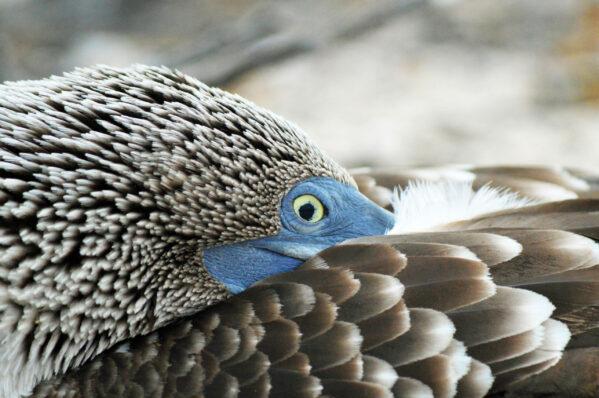
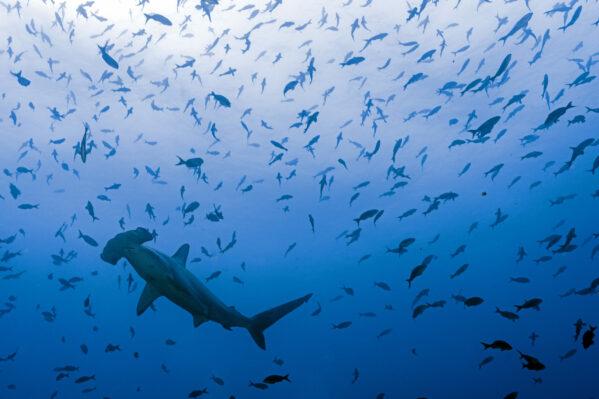
Sustainable development
Visitors are more likely than ever before to stay on land rather than on board a boat or cruise ship, and the Islands’ port towns, such as Puerto Ayora, are rapidly developing to meet the demands of tourism. Over the last 60 years, as families have migrated here from mainland Ecuador, Galapagos has seen a sharp increase in population. In the late 1950s, the population was less than 2,000. Today it is estimated to be more than 32,000.
Sustainable development is integral to protecting the fragile ecosystem. You can help by taking short showers, using your toilet flush sparingly, and ensuring you discard any rubbish responsibly.
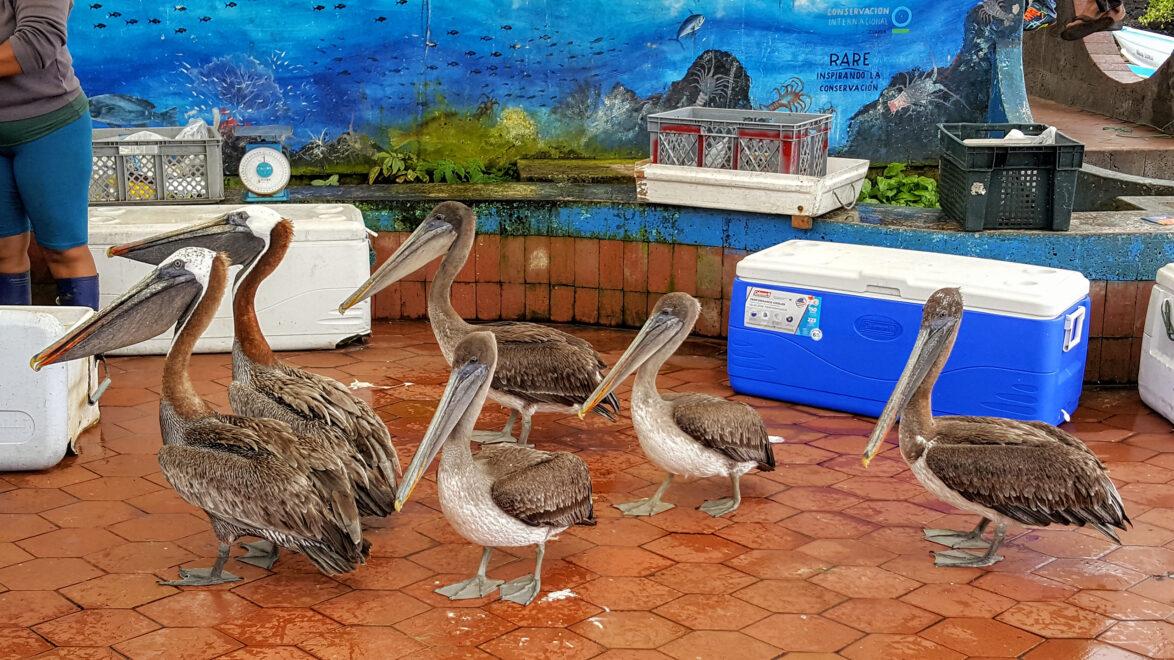

Reducing plastic pollution
Tackling marine plastic pollution is a global challenge, and as a visitor to Galapagos there are some simple and practical actions you can take to reduce plastics. The Governing Council of Galapagos has introduced bans on single-use plastics so ensure you leave these at home.
- Bring a refillable water bottle
- Use a waterproof, reusable drybag
- Leave toiletries that contain microbeads at home
- Pick up litter or do a beach clean while you’re in Galapagos!
Important Galapagos National Park (GNP) rules
If you wish to camp at one of the authorised sites you will need to request a permit from the Galapagos National Park Directorate at least 48 hours beforehand (contact staff at any of the GNP offices on San Cristobal, Santa Cruz, Isabela or Floreana).
All cruises and day trips into the GNP must be accompanied by a licensed guide who ensures that tourists respect the GNP rules:
- Take only photos, leave only footprints
- Do not use a flash
- Professional photo shoots and drones are not allowed without prior authorisation
- Do not leave the trail
- Keep your distance – please keep at least two metres away from all animals and NEVER touch them no matter how tame they appear
- Don’t feed the animals
- Buy responsibly – when purchasing souvenirs, do not buy anything made from the flora, fauna or rocks of the Islands. This includes black coral, marine tortoise shells, sea lion teeth, seashells and lava rock
- No smoking
- No campfires
- No fishing
- No water sports
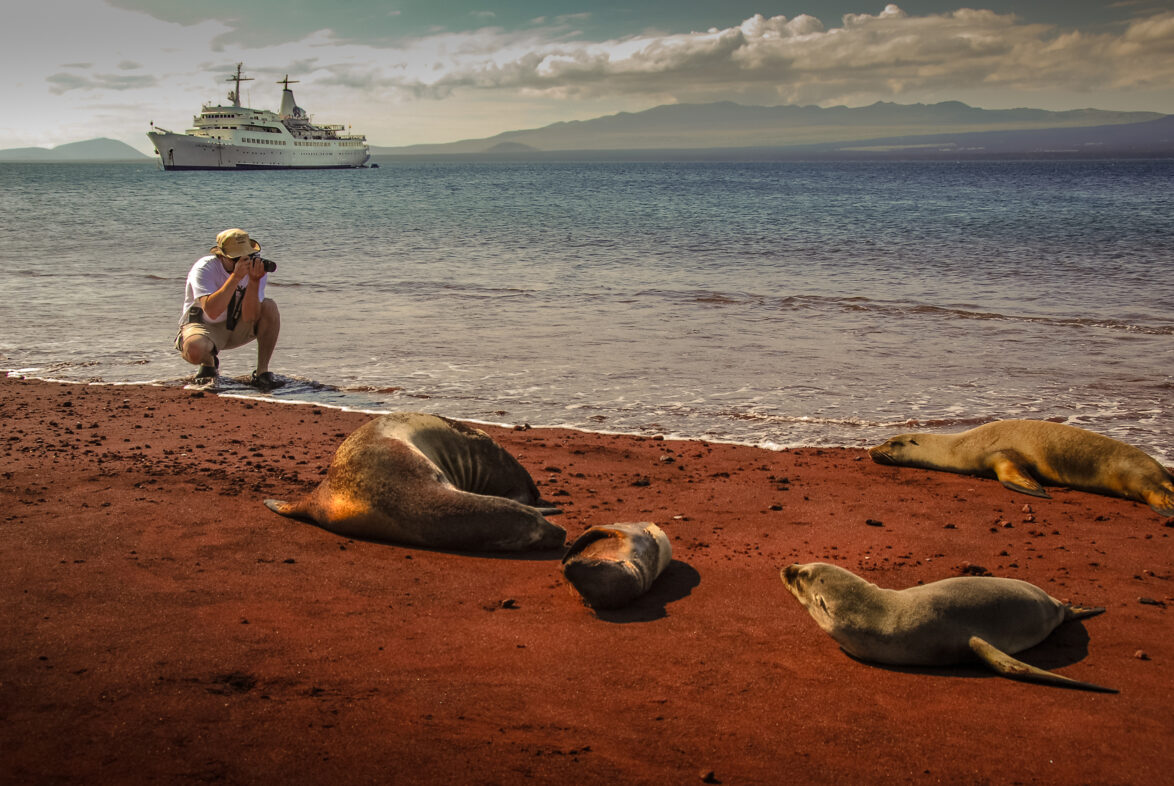
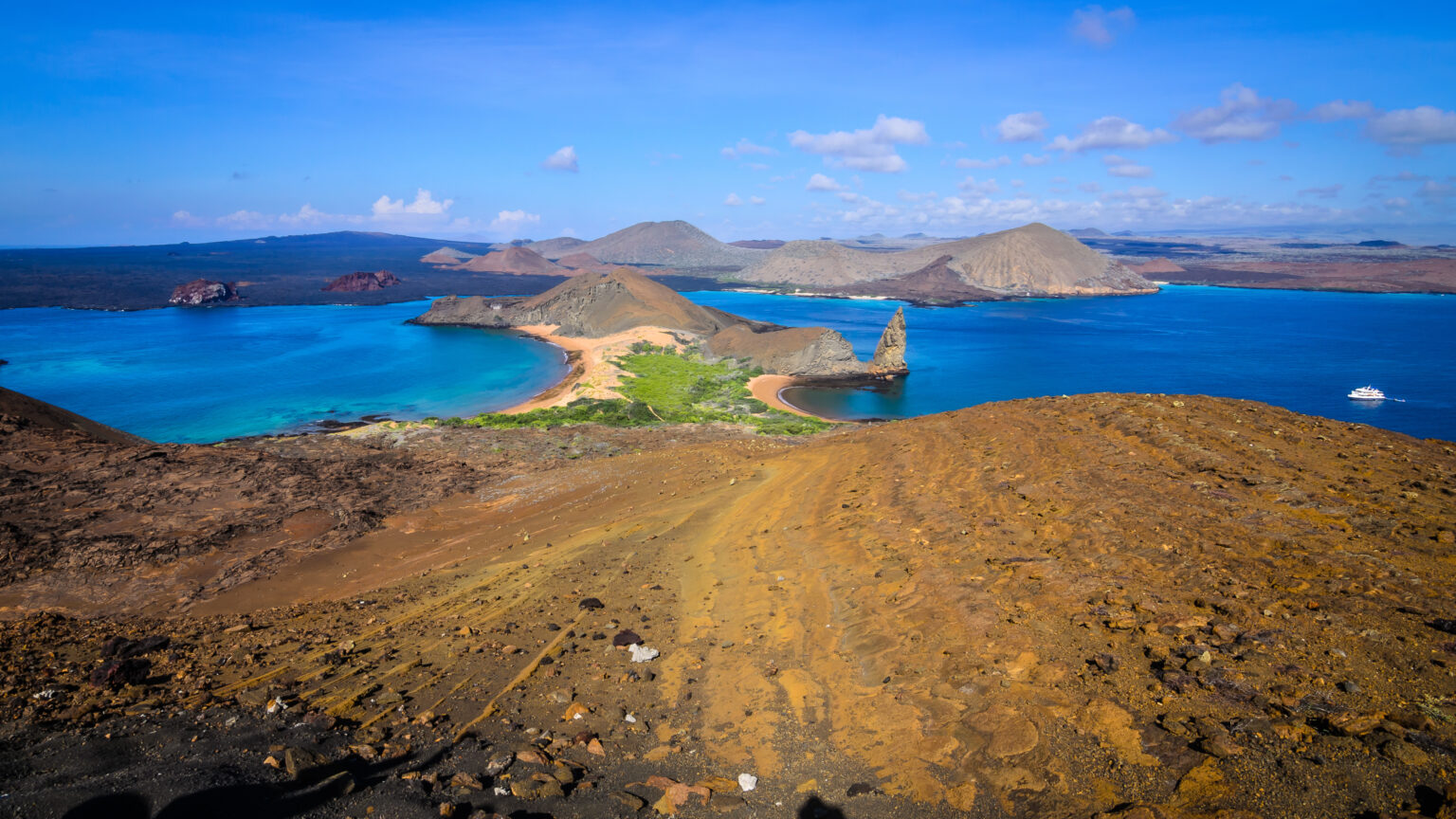
Help the wildlife of Galapagos survive and thrive
There are many ways to support our vision for a sustainable Galapagos: why not adopt an animal, become a GCT member or donate today?


Galapagos photography competition
